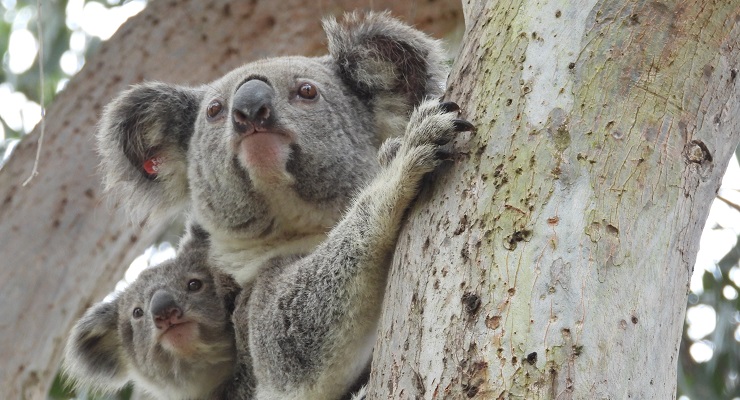
Australia’s track record on the climate crisis is abysmal. The Climate Council has labelled Australia the worst-performing developed country in the world, ranking last on climate performance and pledges.
But our failures go much further than our lack of international commitments. Australia is the global leader in wildlife extinction, with at least 39 mammals known to have died out. Nineteen Australian ecosystems, spanning Australia’s tropical savannahs to herbfields in the Australian Alps, are collapsing.
Report after report outlines just how badly we’re performing, both federally and at state level. Most recently, the Victorian Auditor General’s Office handed down a scathing assessment of Victoria’s environmental performance.
Despite our extraordinary natural riches, the envy of people across the world, we have utterly failed in our duty of care to preserve the environment for the next generation. We are a global conservation pariah and embarrassment.
So why are things so bad? One of the key reasons is that environmental spending continues to be pitiful. On Friday the Morrison government released 100 priority species, which will be a key focus of the second Threatened Species Strategy, with $10 million in community grants — around $100,000 per species — for on-ground activities. But Australia spends just 15% of what is needed to avoid extinctions and recover threatened species, and our annual spending on targeted threatened species recovery is just one-tenth of what the US government spends.
The Victorian government didn’t even fully fund the Department of Environment, Land, Water and Planning baseline “life support” option — the minimal funding to stay afloat — for environmental protection and recovery.
The federal government is even seeking to devolve much of its environmental responsibilities, letting states and territories make decisions on developments in areas that affect nationally significant species, habitat and world heritage areas. This may reduce red tape, but could be devastating. In NSW the government launched its zero extinction target within its national parks with much fanfare recently, but approved the logging and destruction of habitat for some of the state’s most threatened species and koalas elsewhere.
Instead, much of environmental protection funding and initiatives have fallen on the private sector. Businesses are increasingly recognising the value of nature and investing in its care and recovery, with investors signing up to the Climate League 2030 initiative. Atlassian co-founder Mike Cannon-Brookes and his wife Annie recently pledged $1.5 billion of their personal wealth by 2030 to limit global warming.
Experts silenced
Australia punches well and truly above its weight in the ecological, environmental and conservation sciences. This community knows the issues and how best to address them, but they’re stuck in the blocks or handicapped by a severe lack of support (or worse in some cases, with active suppression ensuring expert reports don’t reach the public or government ministers).
One survey found environmental scientists are being silenced: 52% of those surveyed working in local, state or federal government had been prohibited from communicating scientific information. A further 75% of ecologists, conservation scientists, conservation policymakers and environmental consultants reported having refrained from speaking about issues or research in traditional or social media.
A series of factors
None of the devastation is new. Australia’s unique plants, animals and environments have been ravaged since Europeans arrived in Australia roughly 230 years ago.
There are many issues at play, including the forced displacement of Australia’s First Nations people; widespread land clearing and urbanisation; the introduction of invasive plants and animals such as buffel and gamba grasses, rabbits, deer, pigs, horses, foxes and cats; altered fire regimes; unsustainable livestock grazing; pollution; and of course, ever increasingly, climate change.
There are other important factors too, from approving coal mines that will further endanger native species and the Great Barrier Reef to making land clearing on private properties even less regulated, and inadequate monitoring of whether management actions have achieved their stated objectives — assuming clear, explicit objectives exist in the first place.
Despite all the environmental and conservation doom and gloom, an amazing opportunity exists. State, territory and federal governments could invest in halting Australia’s extinction and environmental crises, and in doing so create enormous employment opportunities, help rural and regional economies thrive, and support the goals of First Nations people including self-determination in land management and caring for country.








No need to worry (irony!). The government is busily arguing in the Federal Court (at taxpayer expense) that the Minister for Environment does NOT have a duty of care towards future generations. They lost the original court, but at the moment, judges have reserved their judgment in the Court of Appeal.
if (when) they lose there the govt will no doubt go the High Court, which probably won’t reach a decision before the election. (Though we voters might reach our own decision).
Its currently up to individuals and community groups in the main to try to protect our little patches. We have billions to spend on freaking submarines but SFA for the environment. I hate our governments passionately for their ignorance and shortsightedness.
The crisis covid showed that this federal government is irrelevant to community benefit.
Not a novel concept – that’s why we have states and, once, very functional local councils before they were taken over by the R/E spruikers and carpet baggers.
National government has little to do with people on the ground – the duties are purely external apart from tax collection & disbursement.
Ecocide Laws are now absolutely essential. The ICC has said it will act against individuals (for example CEO’s of mining companies, government ministers: any individual responsible). The lawyers have formalised the definitions, we now need the noise from us, honest political parties and majority UN support – all achievable – lets go……………..
We need to teach permaculture principles to kids of all ages, as well as incorporating indigenous societal and cultural learning in the curriculum. All of our youth should complete one year of bush regeneration or other land based projects and all children need to connect with Uluru and Kakadu to cement the true heart of our wonderful land in our community.
While not disputing that there has been woeful mismanagement, when a country’s population increases X25 or so over 250 years, something’s got to give.